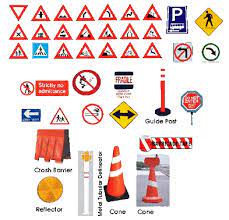Road Safety in India: A Call for Action
India, with its vast road network and ever-increasing traffic, faces a significant challenge when it comes to road safety. Every year, thousands of lives are lost and countless others are injured due to road accidents. This alarming situation demands immediate attention and collective efforts from all stakeholders to ensure safer roads for everyone.
One of the key factors contributing to road accidents in India is the lack of awareness and adherence to traffic rules and regulations. Many drivers fail to understand the importance of following speed limits, using seat belts, and avoiding reckless behaviors such as drunk driving or using mobile phones while driving. This lack of awareness not only puts their own lives at risk but also endangers the lives of pedestrians and other road users.
Another major issue is the inadequate infrastructure on Indian roads. Poorly designed roads, inadequate signage, absence of footpaths, and improper lighting contribute to a higher risk of accidents. Additionally, the lack of proper maintenance leads to potholes and uneven surfaces that further increase the chances of mishaps.
To address these challenges, it is crucial for authorities to prioritize road safety as a national agenda. Here are some key areas that require immediate attention:
- Awareness campaigns: Launching extensive public awareness campaigns can play a vital role in educating people about traffic rules, safe driving practices, and the consequences of reckless behavior. These campaigns should target not only drivers but also pedestrians and cyclists.
- Strengthening law enforcement: Strict enforcement of traffic laws is essential to deter violations. Authorities should ensure that traffic police are well-equipped with necessary resources and training to effectively enforce regulations.
- Infrastructure development: Investing in well-designed roads with proper signage, pedestrian crossings, footpaths, street lighting, and speed breakers can significantly improve road safety.
- Driver training programs: Implementing comprehensive driver training programs that emphasize safe driving practices can help create a responsible driving culture in India.
- Integration of technology: Utilizing advanced technologies such as intelligent transportation systems, CCTV cameras, and automated traffic management systems can aid in monitoring and managing traffic violations effectively.
- Collaboration with stakeholders: Collaboration among government bodies, NGOs, educational institutions, and private organizations is crucial to address road safety comprehensively. Sharing knowledge, resources, and expertise can lead to innovative solutions and effective implementation of road safety measures.
- Research and data analysis: Continuous research and analysis of road accidents can provide valuable insights into the causes and patterns of accidents. This data-driven approach can help in formulating targeted interventions to reduce road fatalities.
Road safety is not just a responsibility of the government or law enforcement agencies; it is a collective responsibility of every citizen. Each one of us needs to prioritize safe driving practices, be considerate towards pedestrians, use public transport whenever possible, and report any hazardous road conditions to the authorities.
Let us join hands in making India’s roads safer for everyone. By raising awareness, improving infrastructure, enforcing regulations, and fostering a culture of responsible driving, we can bring about a positive change and save countless lives on our roads. Remember, every small action counts when it comes to road safety.
9 Essential Road Safety Tips for Driving in India
- Follow traffic rules
- Wear seatbelts
- Use helmets
- Avoid drunk driving
- Be cautious at intersections
- Stay alert for pedestrians
- Watch out for two-wheelers
- Avoid distractions
- Maintain vehicle condition
Follow traffic rules
Follow Traffic Rules: A Simple Step Towards Safer Roads in India
When it comes to road safety in India, one of the simplest yet most effective tips is to follow traffic rules. By adhering to these rules, we can significantly reduce the risk of accidents and create a safer environment for ourselves and others on the road.
Traffic rules are not arbitrary guidelines; they are designed to ensure smooth traffic flow, minimize conflicts, and protect all road users. Here are a few reasons why following traffic rules is crucial:
- Safety for all: Traffic rules prioritize the safety of everyone on the road, including pedestrians, cyclists, motorcyclists, and drivers. By obeying speed limits, using indicators while changing lanes or turning, and maintaining a safe distance from other vehicles, we can prevent collisions and save lives.
- Orderly traffic flow: Following traffic rules helps maintain an orderly flow of vehicles on the road. When everyone follows lane discipline and respects traffic signals, congestion is reduced, and traffic moves smoothly. This not only saves time but also reduces frustration among drivers.
- Respect for pedestrians: Pedestrians have equal rights on the road. By stopping at zebra crossings and giving pedestrians the right of way at designated areas, we show respect for their safety and contribute to a more pedestrian-friendly environment.
- Setting an example: As responsible drivers or riders, we have an important role to play in shaping the behavior of others on the road. When we follow traffic rules consistently, we set a positive example for others to follow. This can create a ripple effect that promotes safer driving habits across the community.
- Avoiding penalties: Violating traffic rules can result in hefty fines or legal consequences. By following these rules diligently, we not only protect ourselves from financial burdens but also contribute to reducing overall violations on our roads.
Remember that following traffic rules is not just about avoiding penalties; it is about prioritizing the safety and well-being of ourselves and others. It is a small but significant step towards building a culture of responsible driving in India.
So, let’s make a commitment to follow traffic rules every time we hit the road. By doing so, we can contribute to creating safer roads, reducing accidents, and making India’s transportation system more efficient for everyone. Together, we can make a difference and save lives.
Wear seatbelts
Wear Seatbelts: Buckle Up for Safety on Indian Roads
When it comes to road safety in India, one simple action can make a significant difference: wearing seatbelts. It may seem like a small step, but buckling up can save lives and prevent serious injuries in the event of an accident.
Seatbelts are designed to restrain occupants during a collision, preventing them from being thrown around inside the vehicle or ejected from it. They distribute the force of impact across the strongest parts of the body, reducing the risk of severe injuries to vital organs and minimizing the chances of fatalities.
Unfortunately, seatbelt usage in India is still not widely practiced. Many drivers and passengers neglect this crucial safety measure, assuming that they can rely on luck or their driving skills alone. However, accidents can happen unexpectedly, and even at low speeds, the impact can be severe.
Wearing seatbelts should be a habit for every person traveling in a vehicle. Whether you are driving or sitting as a passenger, taking a few seconds to fasten your seatbelt can provide invaluable protection. Here are some reasons why wearing seatbelts is essential:
- Preventing ejection: In the unfortunate event of a collision or sudden braking, wearing a seatbelt ensures that you stay inside the vehicle. Ejection from a moving car significantly increases the risk of severe injuries or death.
- Minimizing impact: Seatbelts help distribute the force generated during an accident across stronger parts of your body – typically your chest and hips – reducing injuries to vital organs and minimizing damage.
- Protecting against secondary collisions: In multiple-vehicle accidents or rollovers, wearing seatbelts keeps you securely positioned within your vehicle and reduces the risk of being thrown around or colliding with other objects inside.
- Setting an example: By consistently wearing seatbelts ourselves, we set an example for others – especially children – to follow. Instilling the habit of buckling up from an early age can save lives and create a culture of road safety.
It is important to note that seatbelts are not just for front seat occupants. All passengers, regardless of their seating position, should wear seatbelts for maximum protection. This includes those in the backseat, as they can also be seriously injured during accidents if not restrained.
Let us prioritize our safety and the safety of those around us by making it a habit to wear seatbelts every time we get into a vehicle. It only takes a moment to buckle up, but that small action can make all the difference in ensuring a safer journey on India’s roads. Remember, wearing seatbelts is not just a legal requirement; it is a responsible choice that can save lives.
Use helmets
Use Helmets: Safeguarding Lives on Indian Roads
One of the simplest yet most effective road safety tips for two-wheeler riders in India is to use helmets. Wearing a helmet significantly reduces the risk of head injuries and can save lives in the event of an accident.
India has a large population of two-wheeler riders, and unfortunately, many riders neglect the importance of wearing helmets. This negligence puts their lives at great risk. Head injuries are a leading cause of fatalities in road accidents, and wearing a helmet can provide crucial protection.
Helmets act as a shield for the head, safeguarding it from severe impact during collisions or falls. They distribute the force of impact over a larger area, reducing the chances of skull fractures or brain injuries. Additionally, helmets provide protection against debris, dust, and other particles that may cause distraction or compromise vision while riding.
It is essential to choose a good-quality helmet that meets safety standards. Look for helmets that are certified by authorities like the Bureau of Indian Standards (BIS) or adhere to international safety standards such as DOT (Department of Transportation) or ECE (Economic Commission for Europe). These certifications ensure that the helmet has undergone rigorous testing and meets specific safety requirements.
Wearing a helmet should not be seen as an inconvenience but rather as an investment in personal safety. It is crucial to wear helmets correctly by fastening the chin strap securely and ensuring a snug fit. Ill-fitting or loosely worn helmets may not provide adequate protection during accidents.
Enforcement of helmet laws by traffic authorities is necessary to encourage compliance among riders. Strict penalties for not wearing helmets should be implemented consistently to create awareness and deter violations. Additionally, public awareness campaigns highlighting the importance of helmet usage can play a significant role in changing attitudes towards road safety.
By making it a habit to wear helmets every time we ride our two-wheelers, we contribute towards creating safer roads in India. Let us prioritize our safety and the safety of others on the road by embracing this simple yet life-saving road safety tip. Remember, wearing a helmet is not just a legal requirement; it is a responsibility towards ourselves and our loved ones.
Avoid drunk driving
Avoid Drunk Driving: A Crucial Step towards Road Safety in India
Drunk driving is a serious offense that poses a significant threat to road safety in India. It not only endangers the life of the driver but also puts innocent pedestrians, passengers, and other road users at risk. As responsible citizens, it is our duty to prioritize road safety and take necessary steps to prevent drunk driving.
Alcohol impairs our judgment, slows down our reaction time, and affects our coordination and concentration. When these effects are combined with operating a vehicle, the consequences can be disastrous. Drunk driving significantly increases the likelihood of accidents, injuries, and even fatalities.
To avoid drunk driving incidents and contribute to safer roads in India, here are some important tips to keep in mind:
- Plan ahead: If you know you will be consuming alcohol, plan your transportation in advance. Designate a sober driver among your group or arrange for a taxi or rideshare service to ensure a safe journey back home.
- Use public transportation: Whenever possible, opt for public transportation such as buses or trains. This eliminates the need for personal vehicles altogether and reduces the risk of drunk driving incidents.
- Call a cab or use ride-sharing services: If you find yourself in a situation where you have consumed alcohol and need to get home safely, call a cab or use popular ride-sharing services available in many cities across India. These services provide convenient and reliable options for sober transportation.
- Stay overnight: If you are attending an event or party where alcohol will be served, consider staying overnight at a friend’s place or booking accommodation nearby. This way, you can avoid the temptation of driving under the influence altogether.
- Be responsible as a host: If you are hosting an event where alcohol is being served, ensure that your guests have alternative transportation options available. Encourage them to designate sober drivers or arrange for cabs if needed.
- Educate others: Spread awareness about the dangers of drunk driving among your friends, family, and colleagues. Encourage them to make responsible choices and emphasize the importance of road safety.
Remember, even a small amount of alcohol can impair your ability to drive safely. It is always better to err on the side of caution and avoid driving after consuming alcohol altogether. By doing so, we can contribute to making our roads safer for everyone and prevent unnecessary accidents and tragedies.
Let us all pledge to prioritize road safety in India by avoiding drunk driving and promoting responsible behavior behind the wheel. Together, we can create a culture where road safety is paramount, and every journey is a safe one.
Be cautious at intersections
Be Cautious at Intersections: A Crucial Road Safety Tip in India
Intersections are critical points on the road where multiple vehicles converge, and they can be potential hotspots for accidents. In India, where traffic congestion is a common sight, being cautious at intersections becomes even more crucial for ensuring road safety.
At intersections, vehicles from different directions intersect and often have conflicting movements. This makes it essential for drivers to exercise caution and follow some key practices to prevent accidents:
- Approach with Care: As you approach an intersection, reduce your speed and be prepared to stop if required. Always be aware of other vehicles around you, including two-wheelers and pedestrians.
- Observe Traffic Signals: Pay close attention to traffic signals at intersections. Follow the signal indications strictly and avoid jumping red lights or disregarding stop signs. Adhering to traffic signals helps maintain order and prevents collisions.
- Yield Right of Way: Understand the concept of right-of-way and yield appropriately. Give way to vehicles already in the intersection or those with priority as indicated by road signs or signals.
- Use Indicators: Indicate your intentions clearly using turn signals well in advance before reaching the intersection. This alerts other drivers about your intended direction and helps them anticipate your actions.
- Check Blind Spots: Before making any turns or changing lanes at an intersection, always check your blind spots by using rear-view mirrors or physically turning your head to ensure there are no vehicles or pedestrians in those areas.
- Be Aware of Pedestrians: Intersections often have pedestrian crossings, so keep an eye out for pedestrians waiting to cross the road. Yield to them patiently and allow them sufficient time to safely cross before proceeding.
- Avoid Overtaking near Intersections: Refrain from overtaking other vehicles near intersections as this can lead to dangerous situations where visibility is limited, increasing the risk of collisions.
- Stay Focused: Eliminate distractions while approaching and crossing intersections. Avoid using mobile phones, eating, or engaging in any other activity that diverts your attention from the road.
- Be Prepared for Unexpected Actions: Anticipate the actions of other drivers at intersections, as not everyone may follow traffic rules diligently. Stay alert and be prepared to react quickly to unexpected movements or violations.
- Patience is Key: Finally, exercise patience at intersections, especially during peak traffic hours. Avoid honking unnecessarily or engaging in aggressive driving behaviors that can escalate tensions and lead to accidents.
Remember, being cautious at intersections is not just about your own safety but also about the safety of others on the road. By following these simple yet crucial road safety tips, we can contribute to making our roads safer and reduce the number of accidents at intersections in India.
Stay alert for pedestrians
Stay Alert for Pedestrians: Ensuring Road Safety in India
In India, where bustling streets are filled with diverse modes of transportation, it is crucial for drivers to remain vigilant and attentive to the presence of pedestrians. Unfortunately, pedestrian accidents are all too common due to a lack of awareness and negligence on the part of drivers.
To promote road safety and reduce pedestrian accidents, it is essential for drivers to stay alert and prioritize the well-being of pedestrians. Here are a few tips to help you navigate Indian roads safely:
- Mindful Driving: Always be mindful of your surroundings while driving. Keep an eye out for pedestrians crossing the road or walking on sidewalks. Avoid distractions such as mobile phones or loud music that can divert your attention from the road.
- Follow Traffic Rules: Obey traffic rules and regulations at all times. Stop at designated pedestrian crossings and yield the right-of-way to pedestrians when required. Adhering to traffic signals ensures a smooth flow of traffic while keeping pedestrians safe.
- Reduce Speed: Maintain a controlled speed, especially in areas with heavy pedestrian movement such as residential zones, school zones, or markets. Slowing down allows you ample time to react if a pedestrian suddenly crosses your path.
- Be Patient: Patience is key when encountering pedestrians on the road. Avoid honking unnecessarily or trying to rush through crowded areas. Give pedestrians enough time to cross safely without feeling pressured or endangered.
- Use Horn Wisely: Use your horn judiciously and only when necessary. Excessive honking can startle pedestrians and may cause them to panic or make sudden movements that could lead to accidents.
- Nighttime Caution: Exercise extra caution during nighttime driving when visibility is reduced. Keep an eye out for pedestrians who may not be easily visible, especially in poorly lit areas.
- Respect Pedestrian Zones: Be aware of designated pedestrian zones such as footpaths, sidewalks, and zebra crossings. Avoid parking or stopping in these areas, as it obstructs pedestrian movement and puts them at risk.
Remember, pedestrians have the right to use the roads safely. By staying alert, following traffic rules, and showing respect for pedestrians, we can contribute to a safer road environment in India. Let’s prioritize their safety and work towards creating a culture of responsible driving that respects the rights of all road users.
Watch out for two-wheelers
Watch out for Two-Wheelers: Ensuring Road Safety in India
India’s roads are filled with a diverse range of vehicles, including a significant number of two-wheelers. As responsible drivers, it is crucial to be extra vigilant and watch out for these vulnerable road users to ensure their safety and prevent accidents.
Two-wheelers, such as motorcycles and scooters, often face unique challenges on the road. They are more prone to accidents due to their smaller size, reduced stability, and limited protection compared to four-wheeled vehicles. Therefore, it becomes our responsibility as motorists to take extra precautions when sharing the road with them.
Here are some essential tips to keep in mind while driving:
- Maintain a safe distance: Two-wheelers can be unpredictable, especially in heavy traffic or congested areas. It is important to maintain a safe distance from them at all times. This provides both parties with enough time and space to react in case of sudden maneuvers or emergencies.
- Use mirrors effectively: Regularly check your rear-view and side mirrors for any approaching two-wheelers before changing lanes or making turns. Being aware of their presence helps avoid potential collisions and ensures smooth traffic flow.
- Signal your intentions: Always use your indicators well in advance before turning or changing lanes. This simple act allows two-wheeler riders behind you to anticipate your movements and adjust their position accordingly.
- Be cautious at intersections: Intersections can be particularly dangerous for two-wheeler riders due to blind spots and negligent driving by other motorists. Exercise caution when approaching intersections, look out for any approaching two-wheelers, and yield the right of way when necessary.
- Check blind spots: Before making any lane changes or merging into traffic, remember to check your blind spots carefully. Two-wheelers can easily go unnoticed in these areas, so taking an extra moment to ensure there are no nearby riders can prevent potentially disastrous accidents.
- Slow down near pedestrian crossings: Many two-wheelers share the road with pedestrians at crossings or zebra crossings. Reduce your speed and be prepared to stop if required, allowing pedestrians and two-wheelers to safely cross the road.
- Avoid distractions: Distracted driving is a significant hazard for all road users, including two-wheelers. Avoid using mobile phones or engaging in any other activities that take your attention away from the road. Staying focused helps you react promptly to unexpected situations involving two-wheelers.
By following these simple yet crucial tips, we can contribute to the safety of two-wheeler riders on Indian roads. Remember, they are more vulnerable than us, and it is our responsibility to watch out for them and ensure their well-being. Let’s promote a culture of mutual respect and understanding among all road users, making our journeys safer and more pleasant for everyone involved.
Avoid distractions
Avoid Distractions: A Crucial Step Towards Road Safety in India
In recent years, the rise of technology and increased connectivity has brought about a concerning trend on Indian roads – distracted driving. This dangerous behavior poses a serious threat to road safety and demands immediate attention. To ensure safer roads for everyone, it is crucial to emphasize the importance of avoiding distractions while driving.
Distractions can come in various forms, but the most common ones include mobile phone usage, eating or drinking, grooming, adjusting music or navigation systems, and engaging in conversations with passengers. These seemingly harmless activities can divert our attention from the road and significantly increase the risk of accidents.
Using mobile phones while driving has become a prevalent issue. Texting, making calls, or even glancing at notifications diverts our focus from the road ahead. Research shows that texting while driving increases the chances of accidents by four times. It is essential to understand that no message or call is worth risking lives on the road.
Eating or drinking while driving may seem like a time-saving strategy for busy individuals; however, it takes away our attention from the task at hand. Spills or reaching for food items can lead to loss of control over the vehicle and result in accidents.
Grooming activities such as applying makeup or combing hair require visual and manual attention that should be dedicated solely to driving. Even a momentary lapse in concentration can have severe consequences.
To prioritize road safety and avoid distractions while driving:
- Put your mobile phone on silent mode or activate the “Do Not Disturb” feature before starting your journey.
- If using GPS or any other navigation system, set it up before you begin driving and avoid adjusting it while on the move.
- Finish eating or drinking before getting behind the wheel.
- Ensure that all passengers are buckled up and settled before you start driving to minimize potential distractions.
- If necessary, pull over to a safe location if you need to attend to an urgent call or address any other distraction.
By consciously avoiding distractions, we can significantly reduce the risk of accidents on Indian roads. It is not just our own lives that are at stake but also the lives of pedestrians, cyclists, and fellow drivers. Let us all take responsibility for our actions and commit to safe driving practices. Together, we can make a difference and create a safer road environment for everyone in India.
Maintain vehicle condition
Maintain Vehicle Condition: A Key to Road Safety in India
When it comes to road safety in India, one crucial aspect that often goes overlooked is the maintenance of our vehicles. Ensuring that our vehicles are in good condition is not only essential for their longevity but also plays a significant role in keeping ourselves and others safe on the roads.
Regular vehicle maintenance helps identify potential issues that could lead to accidents or breakdowns. Here are a few tips to maintain your vehicle’s condition and promote road safety:
- Regular servicing: Schedule regular servicing of your vehicle as recommended by the manufacturer. This includes checking and changing engine oil, filters, brakes, tires, and other vital components. Regular servicing helps identify any underlying problems and ensures optimal performance.
- Tire care: Check your tire pressure regularly and maintain it at the recommended levels. Underinflated or overinflated tires can affect handling, braking, and fuel efficiency. Additionally, inspect the tire tread regularly for signs of wear and tear or damage. Bald or damaged tires can lead to loss of control on wet or slippery roads.
- Brake maintenance: Brakes are one of the most critical safety components of any vehicle. Ensure that your brakes are functioning properly by getting them checked regularly by a professional mechanic. Squeaking noises or reduced braking efficiency should be addressed immediately.
- Lights and signals: Proper functioning of headlights, taillights, indicators, and other lights is crucial for visibility on the road, especially during low-light conditions or bad weather. Regularly check all lights to ensure they are working correctly.
- Fluid levels: Check fluid levels such as engine oil, coolant, brake fluid, and windshield washer fluid regularly as per your vehicle’s specifications. Low fluid levels can affect performance or even cause mechanical failures while driving.
- Electrical system: Keep an eye on your vehicle’s electrical system, including battery health and charging system performance. Faulty electrical systems can lead to unexpected breakdowns or failures while on the road.
- Wipers and mirrors: Inspect and replace worn-out wiper blades to ensure clear visibility during rain or dusty conditions. Additionally, keep your rearview and side mirrors clean and properly adjusted for a clear view of the surrounding traffic.
By maintaining our vehicles in good condition, we not only reduce the risk of accidents but also contribute to a safer road environment for everyone. Regular maintenance not only saves lives but also saves money in the long run by preventing costly repairs or breakdowns.
Remember, road safety is a shared responsibility, and every small effort counts. So, let’s prioritize vehicle maintenance and play our part in making India’s roads safer for all.




